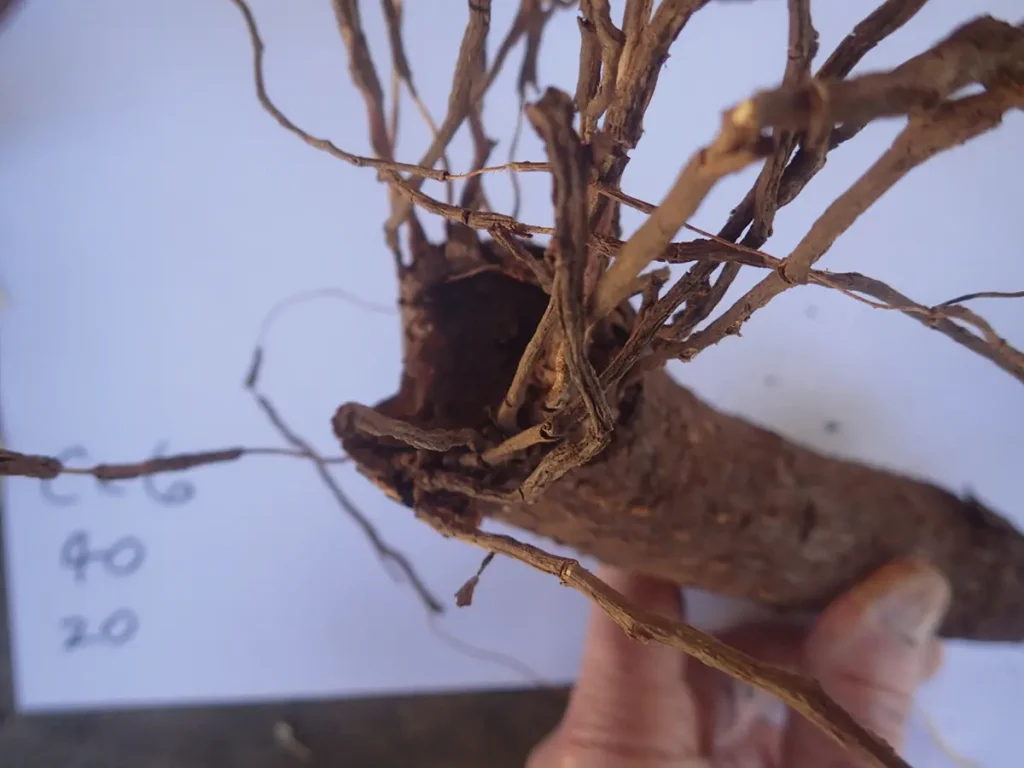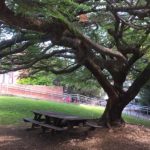Tree Roots; Cut or Break. By Peter Gray
Abstract
Successful retention of trees in development sites is important if the tree cover in the urban environment is to be increased. If cutting tree roots cleanly can be shown to increase the new growth of tree roots and prevent the spread of decay up the roots, then this practice should continue to be encouraged. A study was planned and carried out to determine whether that is the case.
The Australian Standard AS 4970-2009 Protection of trees on development sites gives guidance on how best to manage development that affects trees. This includes dealing with tree roots and excavation around trees. Section 4.5.4 of the Standard advises that tree roots should be cut cleanly and that “pruning” roots with an excavator is not acceptable. There appears to be little research to support that contention.
Method
In October 2019, the first of two studies was conducted out on the NSW north coast. The site was in an area with an average annual rainfall of 1,200 mm, and the soil type was red clay loam.
The soil was dug out with an excavator to half a meter in depth. Most of the roots were encountered in a zone 150 wide approximately 300 mm below the surface of the soil. Roots were left as they were broken by the excavator or cut by a concrete cut~off saw or a stump grinder. There were three sites, each with a different species of tree.
The three different species chosen were:
- Flooded Gum (Eucalyptus grandis)
- Moreton Bay Fig (Ficus macrophylla) and
- Camphor Laurel (Cinnamomum camphora).
These particular species were chosen because they are relatively common and they were growing on the available sites.
Three different methods were used to sever the roots of the trees. Some were broken off with an excavator, and some were cut cleanly with a concrete cut-off saw, and some were cut using a stump grinder.
The Flooded Gums were a row of mature trees that had been planted and were approximately 30-50 years old. The excavation was done approximately 3 m from the base of the trees.
The Fig tree was a single tree growing in a paddock that was previously used for grazing and was around 50 years old. The tree is likely to be naturally occurring. The excavation was carried out approximately 5 m from the base of this tree.
The Camphor Laurels were in a stand of naturally occurring trees approximately 20- 30 years old. The excavation was carried out approximately 3 m from the base of the trees.
The trench was backfilled and left for one year. In September 2020 the roots were uncovered using an airspade. The severed roots were exposed and examined. The roots that had been broken with the excavator had responded much better than the cleanly cut roots in terms of the number and size of new roots produced.
These results were unexpected, but the number of replicates was small, and this suggested that further sampling was required. The next study used two species of tree and two methods of severing the roots.
A row of planted Tallowwood Eucalyptus microcorys and a row of naturally occurring Camphor Laurels Cinnamomum camphora were selected for the study a similar nearby site as used in the first study. The trees were mature aged, approximately 25-30 years old, and all were in good condition.
In October 2020 a trench was dug with an excavator in the same way as the first study, approximately 3 m from the base of the trees. Roots of different sizes were left broken off by the excavator or cut cleanly using a reciprocating saw. The trench was backfilled with the soil that was excavated and left for one growing season. In May 2021 the roots were uncovered using an airspade. These roots were then examined for root growth response. The diameter of the original roots was measured using a vernier calliper and the new roots that had grown near the severed end of the root were counted.
The ends of the roots were cut axially and were visually examined to determine the extent of decay.
Findings
The findings are shown in Table 1. Camphor Roots and Table 2. Tallowwood Roots. A graph of the findings with one axis being the size of the roots and the other axis the number of new roots is shown is Graph I Camphor Laurel and Graph 2 Tallowwood.
The findings of the 2021 research clearly show a correlation between breaking the roots and new root development. There were fewer roots growing from the roots that were cut cleanly.
Roots that were broken consistently produced an increased number of new roots compared to roots that were cleanly cut. In all cases, the decay appeared to be well compartmentalized.
The study showed that regardless of the method used to sever the root. The extent of decay appeared to be more related to the area of the xylem exposed in the severing activity and not to the method of severance. It is surmised that the presence of large amounts of parenchyma cells in the roots enabled the tree to inhibit the progression of decay and fungal attack. This was a consistent observation.
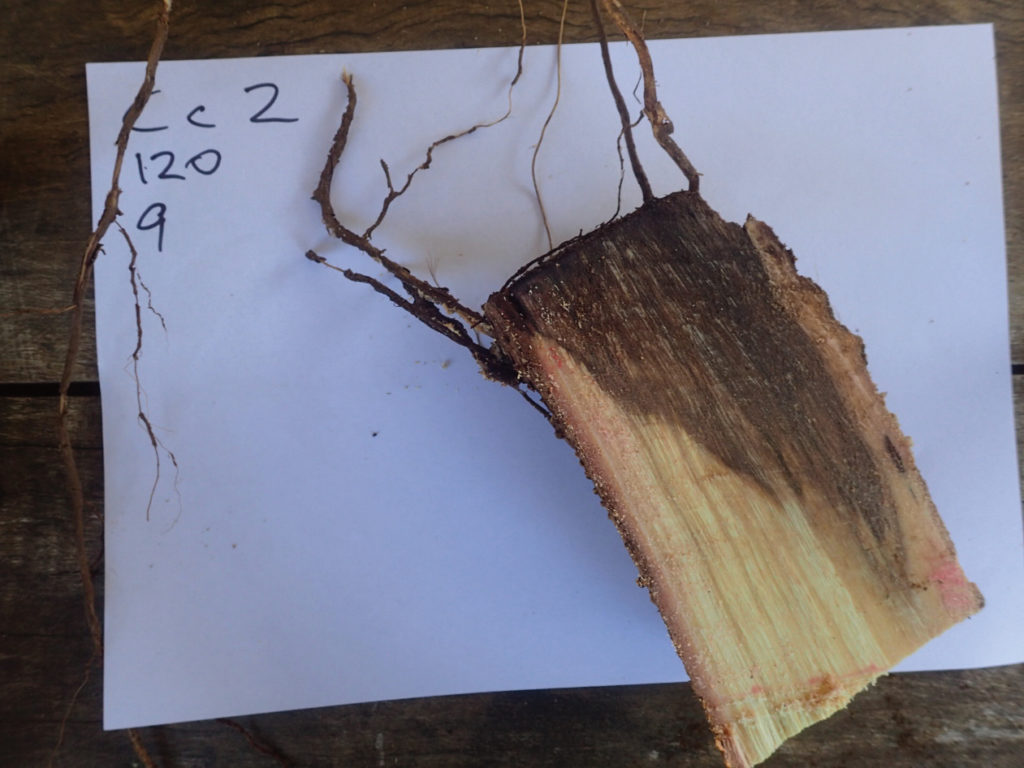
Photo 1. Second Study.
Camphor Laurel root cut cleanly.
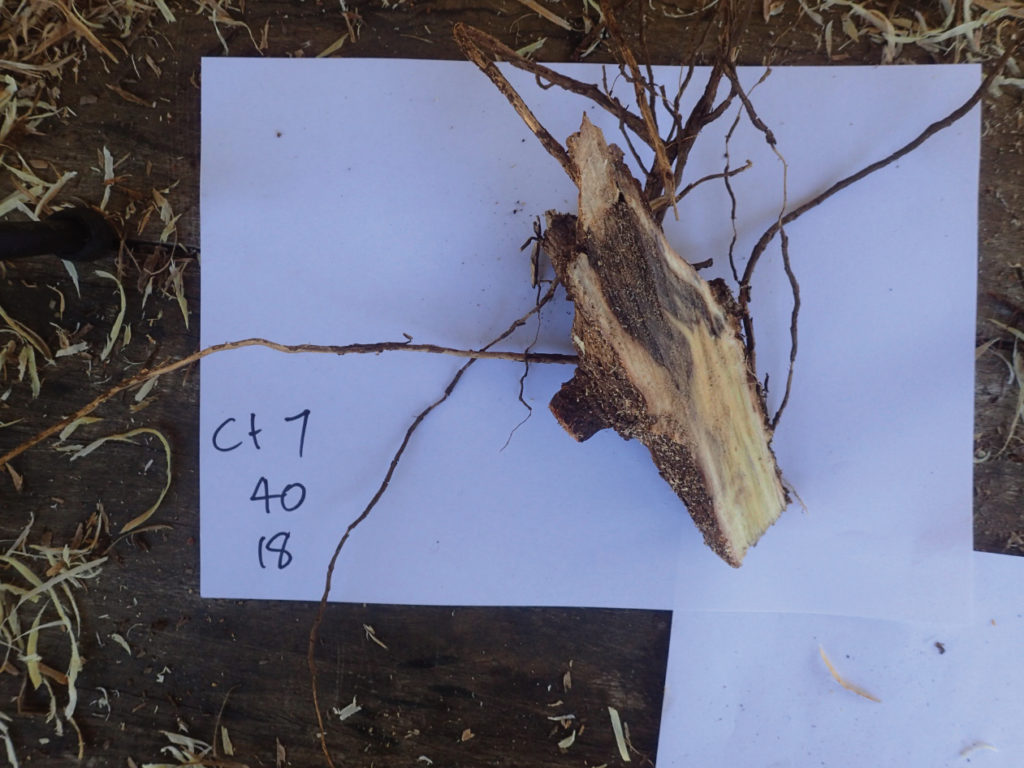
Photo 2. Second Study.
Camphor Laurel Root broken.
Camphor Laurel and Graph 2 Tallowwood show that there is generally a greater number of new roots in the broken roots compared to the cleanly cut roots. The study shows that breaking the roots off with an earthmoving machine does not produce a worse result than cutting them cleanly. Addition information is present in the graphs at the end of this paper.
The photographs show new root growth occurred mostly along the margins of the wound. While broken roots did have a larger wound margin (for equal diameter roots) they also had increased new root formation. Not surprisingly, new root initiation occurs from callus produced by the exposed cambium and adjacent parenchyma. If the root is cut cleanly the area of callus is reduced limiting the ability of the severed root to initiate new root growth. If the root is broken off, a larger area of callus can develop.
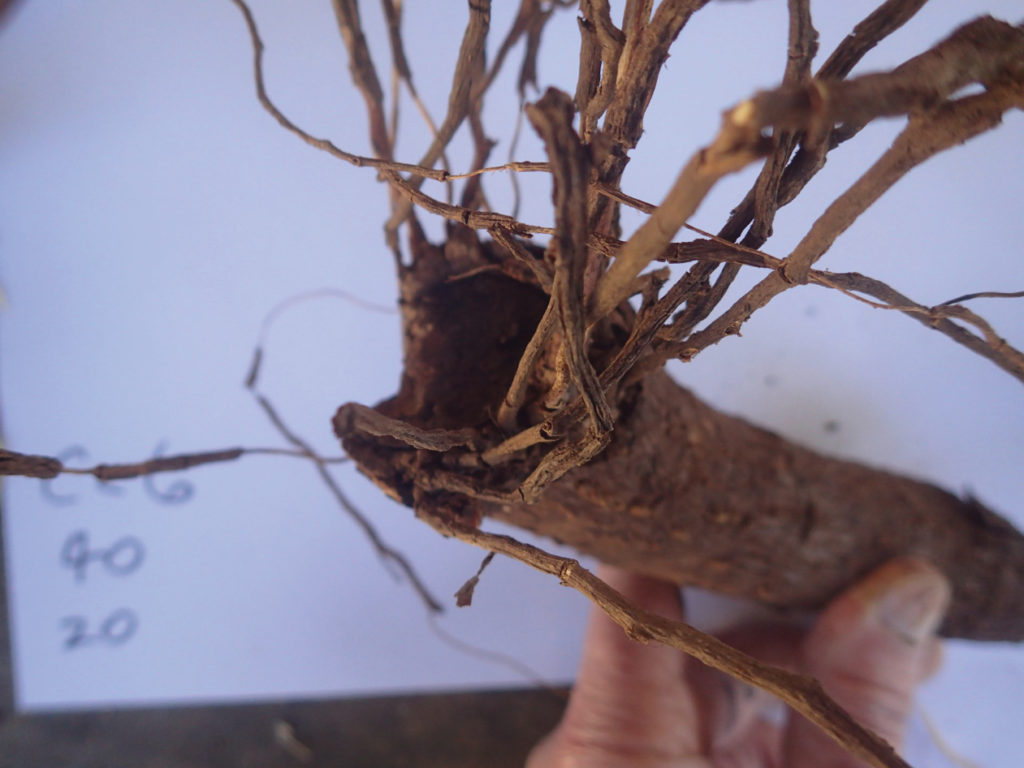
Photo 3. Second Study.
Camphor Laurel roots cut cleanly. The new roots have arisen from the cut section.
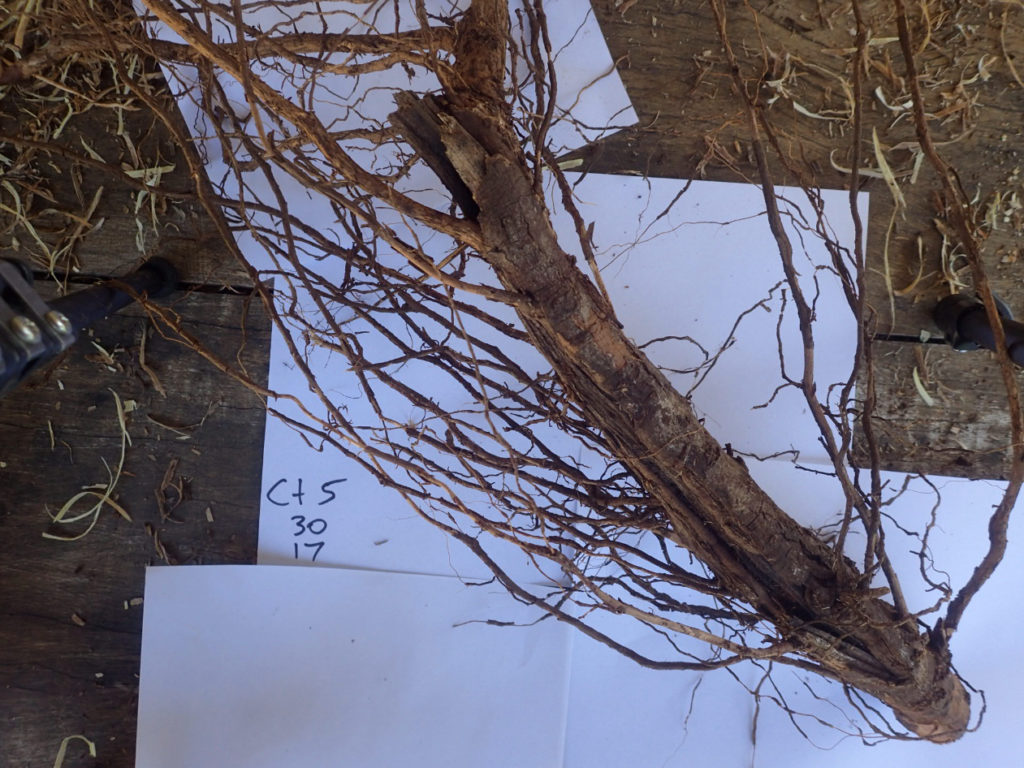
Photo 4. Second Study
Camphor Laurel roots broken off. The new roots have arisen from the damaged section.
Discussion
Roots are not all the same. The type and distribution of tree roots varies widely with the species and soil conditions; however, tree roots are usually described as structural roots with rapid taper, sinker or striker roots, transport and storage roots, which are all woody roots and absorbing roots (Eschel and Beekham 2013).
Woody roots form most of trees root system. They include structural roots, a critical but small portion of the root system. The growing tip and absorbing roots are small and ephemeral. The discussion of root pruning in the Standard is silent on which types of roots are being pruned.
In his work, Hamilton notes that there is a high proportion of parenchyma cells in woody roots and that no doubt influences the ability of roots to resist decay. He also notes that the removal of large lateral roots and the associated removal of large amounts of starch puts the tree under stress which can result in the decline or even death of the tree.
The canopy is needed to produce new carbohydrates that then can become starch that allow for the formation of new root development. Therefore, it is important to limit the pruning of the tree’s canopy for a period before or after root pruning is done.
There have been studies that investigate the effect roots have on buildings (Biddle 1979; McLeod and Cram 1996). Studies have shown the effectiveness of root barrier systems (Morgenroth 2008; Smiley et al. 2009) and the effect of root pruning on the failure rate of trees (Hamilton 1989). There appears to be no work done that looks at the effects of cleanly cutting or breaking roots on decay and new root generation.
The transport and storage roots that comprise most of a trees woody roots vary from less than a millimetre in diameter to many centimetres in diameter but are not in the zone of rapid taper. The Standard does differentiate between cutting roots at the Tree Protection Zone (the TPZ) line or within the TPZ. It is likely that the roots referred to in the Standard are nearly all transport roots as the absorbing roots are very small, and there would be little difference between cutting and breaking absorbing roots. Root severance most commonly occurs outside the Structural Root Zone as defined by the Standard or even as defined using the Zone of Rapid Taper.
There are practical difficulties with cutting roots cleanly. First, they must be located, usually involving excavation that will damage smaller woody roots. Often roots are ‘pruned’ with an earthmoving machine such as an excavator on development sites in spite contrary to any consent condition. Even once exposed and cleaned, cutting roots with hand tools can result in the tools being dulled and even damaged.
Trees sometimes decline and die after root pruning on development sites occurs. It may not always be root damage that causes or significantly contributes to their decline or death. roots.
There are other factors such as changes to soil grade and pH or changes to the water available to the tree that can also affect tree health.
Many councils require roots to be cut cleanly. Often the rationale is that failure to do this will cause the decline and death of the trees. The likelihood of roots decaying and causing disease in the tree is often cited. Hamilton has shown that the decline and death of trees after root pruning is more closely related to the amount of starch reserves lost in the process. The progression of decay in roots is inhibited by the high proportion of parenchyma in the transport roots, so as the study shows there is little difference in the spread of decay between roots broken or cut cleanly.
Conclusion
Breaking roots off does not result in more decay forming in the roots or less new root development than cutting the roots cleanly. The studies undertaken here showed that there was no difference in the decay based on the size of the wound but did find an increase in the volume of new roots produced by breaking the roots rather than cleanly cutting the roots. These results were limited to roots with diameters of less than 12 cm and may not be applicable to larger diameter roots. It is suggested that in the absence of supporting research that roots greater than 10 cm in diameter continue to be cleanly cut but that roots of 10 cm in diameter or less can be broken without adverse effect and with potential positive effects.
There is no reason for requiring roots less than 10 cm in diameter to be cut cleanly as outlined in the Standard. At best there is no benefit from cleanly cutting roots that need to be severed and at worst new root production is being reduced.
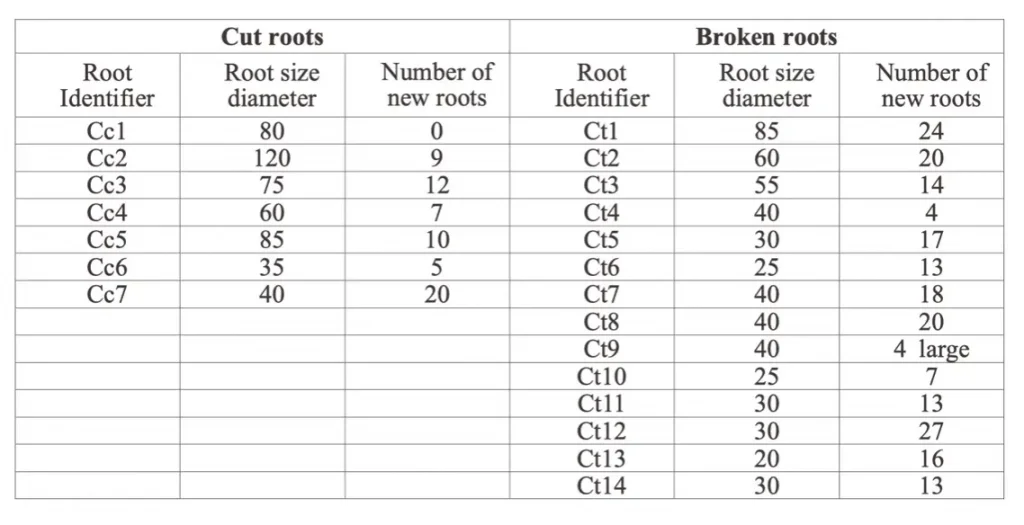
Table I.
Second Study Camphor Roots
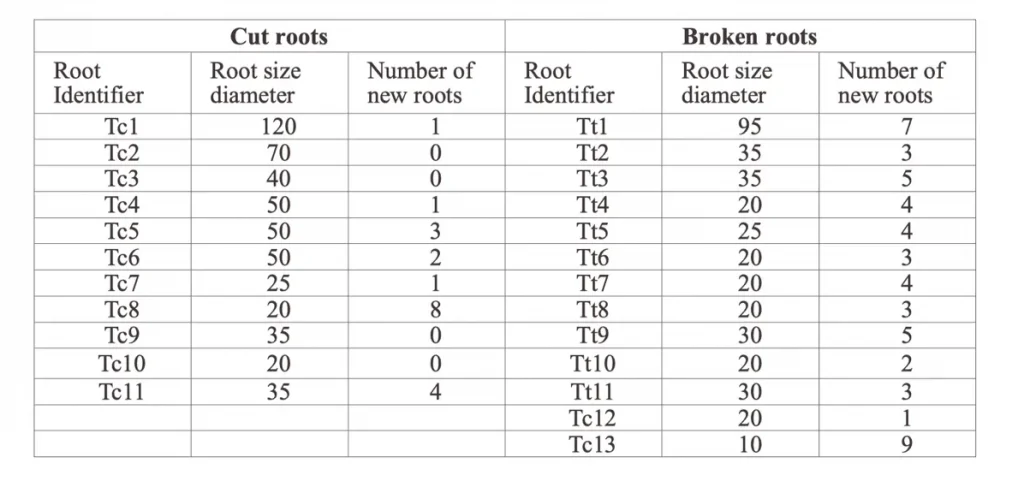
Table 2.
Second Study Tallowwood Roots
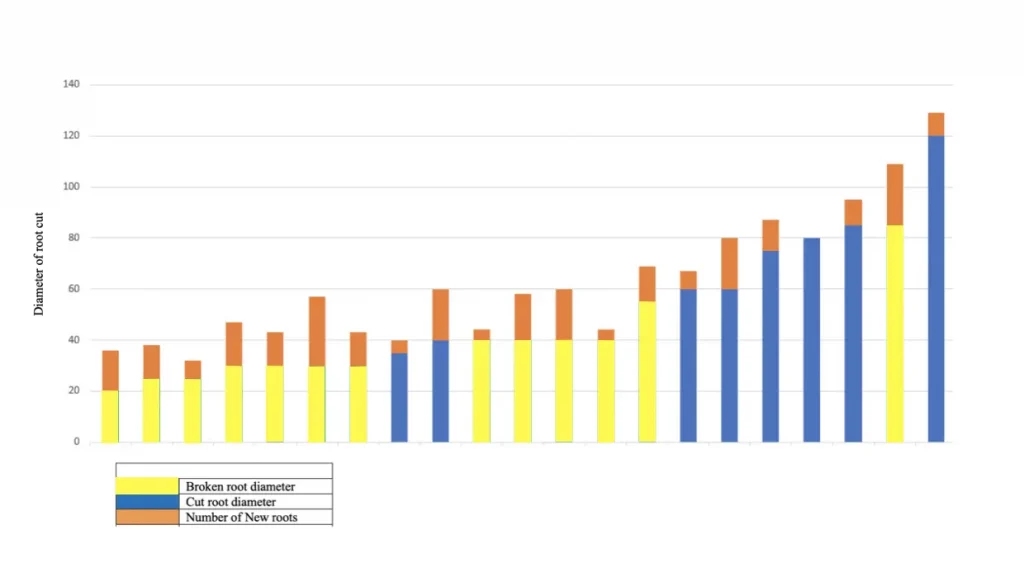
Graph 1.
Second Study Camphor Roots
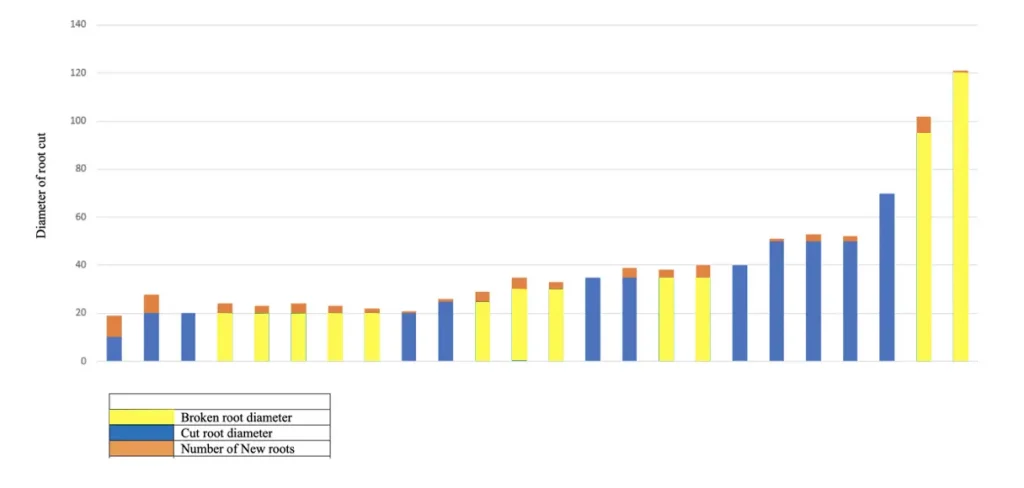
Graph 2.
Second Study Tallowwood Roots
References
Biddle P. 1979. Tree Root Damage to Buildings-An Arboriculturalists Experience. Arboricultural Journal 3:6 pp 397-412.
Eschel A, Beekham T. 2013. Plant Roots the Hidden Half Fourth Edition. CRC Press. Boca Raton.
Hamilton D. 1989. Significance of Root Severance on Performance of Established Trees. Arboricultural Journal Vol 13 pp 249-257. Academic Publishers. Great Britain
MacLeod R. Cram W. 1996. Forces Exerted by Tree Roots. Arboricultural Advisory & Information Service. Surrey.
Morgenroth J. 2008. A Review of Root Barrier Research. Arboriculture and Urban Forestry 24(2) pp 84-88. SA.
Smiley T, Wilkinson, Fraedrich B. 2009. Root Growth Near Vertical Root Barriers After Seven Years. Arboriculture and Urban Forestry. ISA.
Standards Australia. 2009. AS 4970 Protection of Trees on Development Sites. Australian Standards. Sydney.


